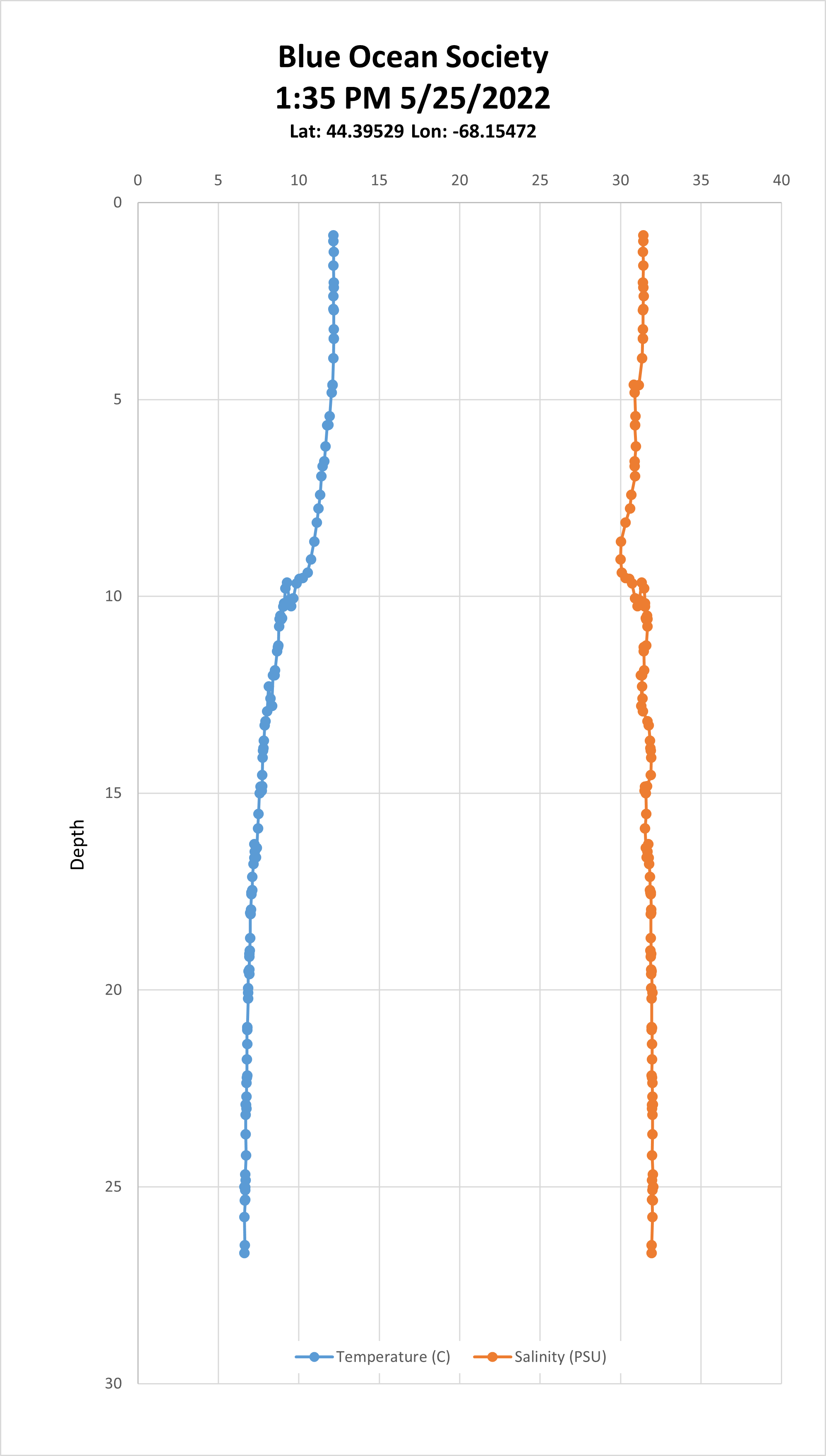This is a water column profile produced by an OpenCTD cast:

The Y-axis is depth (in meters). This is the information that comes from the pressure sensor. The X-axis is both temperature and salinity, in practical salinity units. When both temperature and salinity have relatively similar values, you can get away with one axis, otherwise you have to break them up.
The blue line show temperature decreasing with depth, and a slight thermocline around 10 meters. The orange line shows salinity very slightly increasing with depth, and a slight halocline, also around 10 meters.
So what?
On a base level, this data is useful for understanding ongoing water quality trends. How much less salty is the surface after a rain? Is it warmer now than it was this time last year? Is the mixing layer deeper or shallower than last week?
That information correlates to some important questions about how marine life interacts with water quality. Do fish like to hang out at the halocline? Do whales show up more often when the water column is more stratified? Do crabs leave the bay if it's too fresh? All very important questions that need a CTD to answer.
But there are also some more technical uses for this data. The speed of sound in water changes based on... you guessed it... salinity, temperature, and depth. So if you're mapping the seafloor, or tracking a submarine, or hunting for shipwrecks, you need to know this data to compensate SONAR readings.
And you know. CTD profiles aren't always the most exciting thing in the world. This, for example, is an excellent cast of some very uniform conditions:

But the more data we have, the better equipped we'll be to be able to detect when something weird is happening in the ocean.
So, there's a phase 3 of the OpenCTD, which is currently beyond my capacity as an ecologist and hardware guy, and that's to build a global database of community oceanographic data that can be used to detect subtle deviations from ocean norms. But who knows? Maybe a boost from Hackaday will be just what we need to push this project to the next level.
 andrew.david.thaler
andrew.david.thaler
Discussions
Become a Hackaday.io Member
Create an account to leave a comment. Already have an account? Log In.